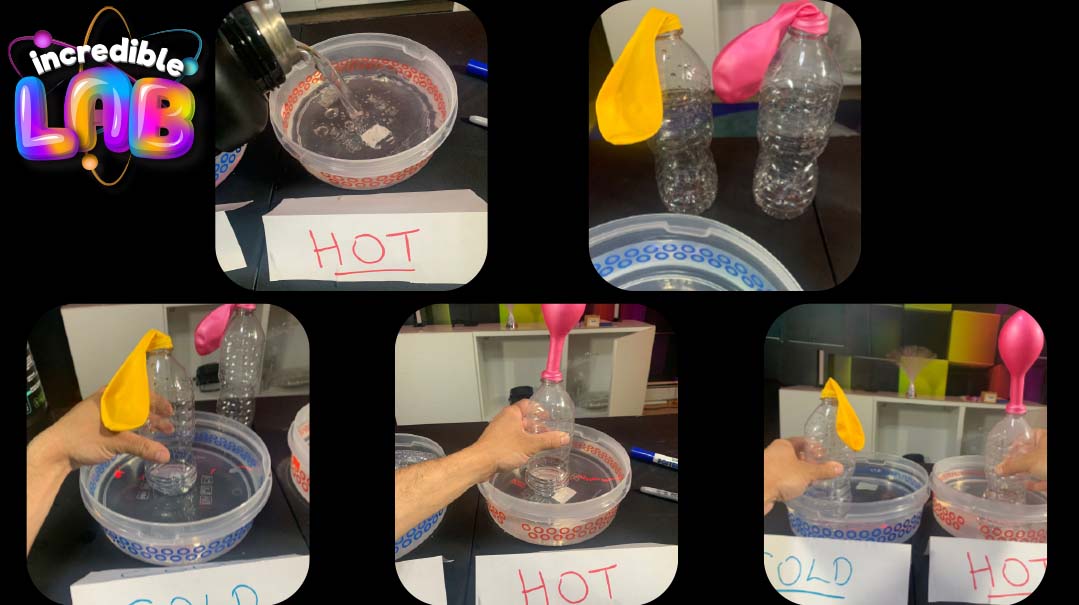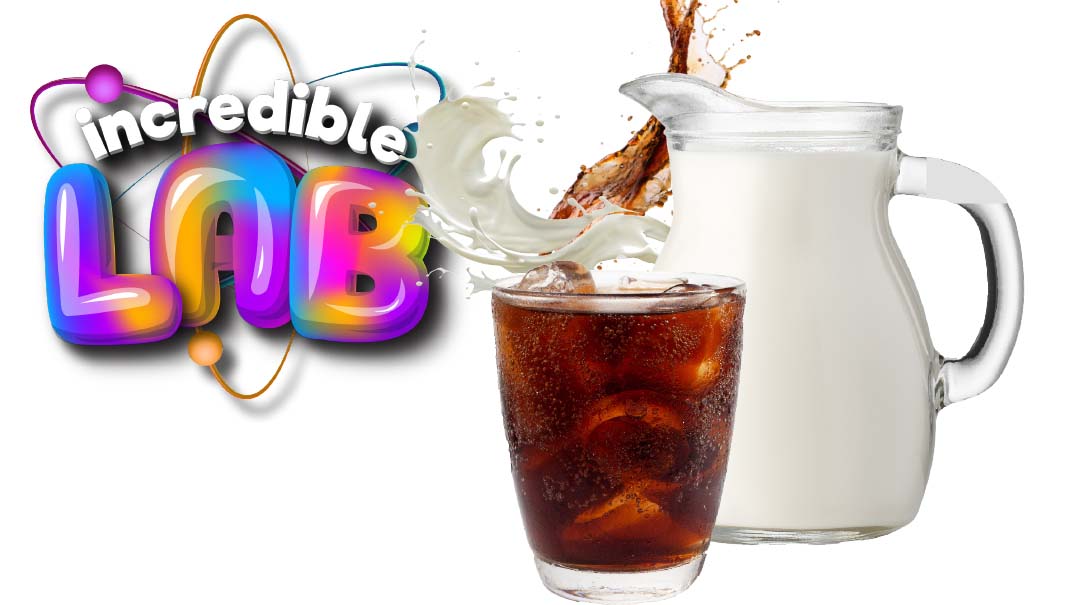The Self-inflating Balloon

Heat expands molecules while cold contracts them. And this experiment demonstrates it

Brought to you by Yochanan Ghoori
Did you ever notice that wooden doors in your home sometimes seem to be hard to open or close, depending on the weather? That’s because cold air can cause the door to contract, making the molecules (combined atoms that make up everything) inside it move closer together. And warm air can cause the molecules to expand, making it seem like the door no longer fits its frame.
Yep, heat expands molecules while cold contracts them. And this experiment demonstrates it.

You will need:
- 2 balloons (and an extra one or two, just in case)
- 2 glass bowls
- 2 empty 20-oz. bottles (like the kind soda or water often come in)
- hot water
- cold water
- ice cubes
How to do it:
- Blow up the balloons a few times, letting the air out each time, before doing this experiment. This allows for easier inflation during the experiment.
- Prepare one bowl of hot water (handle it carefully!) and one with cold water. Add the ice cubes to the bowl of cold water to keep it extra cool.
- Stretch the mouth of a balloon over each of the empty bottles.
- Place one bottle in each of the bowls and let it sit there for a few minutes.
- The balloon sitting on the bottle in the hot-water bowl will slowly fill with air, while the balloon sitting on the bottle in the cold-water bowl will stay deflated.
Did You Know?
>Hot air balloons work based on the same principle as this experiment. They’re lifted by heating the air inside the balloon (usually with a gas burner). Because hot air is less dense than cold air, it also weighs less than cold air. This causes the hot air to rise up when there is cold air around it (just like an air bubble in a pot of boiling water). And this rising is what lifts the balloon.
Believe it or not, people weren’t the first ones to fly in a hot air balloon. The first balloon passengers were a sheep, a duck, and a rooster, who were sent up in a hot air balloon in September 1783. They had a distinguished audience: King Louise XVI and Queen Marie Antoinette of France. These barnyard friends ascended about 1,500 feet in the air and came back down unharmed. Phew! People tried out hot air balloon flights about a month later, and we’ve been enjoying riding the air ever since… some hot air balloons today can even carry as many as 36 passengers!
Oops! We could not locate your form.





